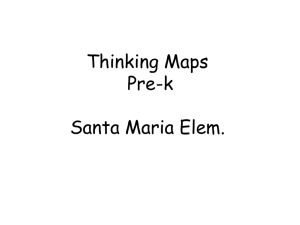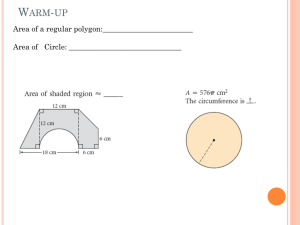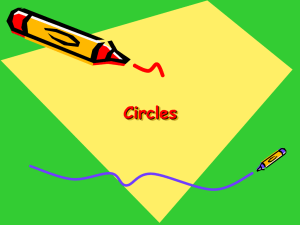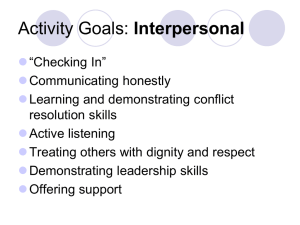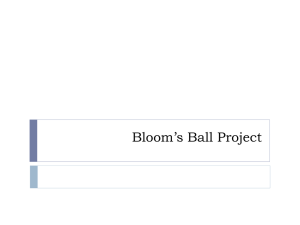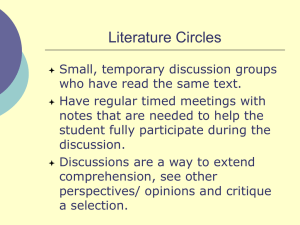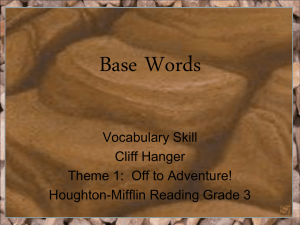Social Thinking
advertisement
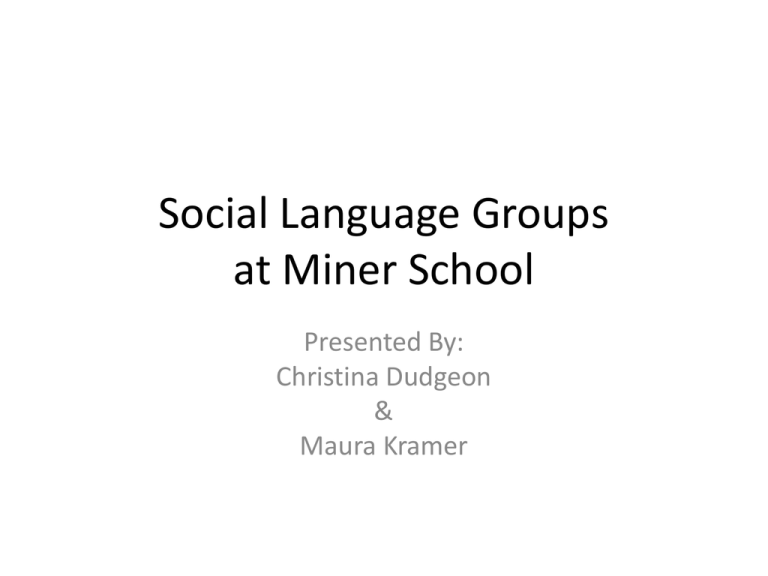
Social Language Groups at Miner School Presented By: Christina Dudgeon & Maura Kramer Background Information • Miner School Population – Therapeutic day school setting – Elementary through transition – Wide range of special needs including autism spectrum disorders, behavioral disorders, cognitive disabilities, physical/health impairments, and multiple disabilities • Who is involved? – Speech-Language Pathologists and Classroom Therapists (Social Worker, Psychologists) – Teachers and Assistants – Students Logistics • Social skills groups meet once a week to explicitly teach and practice the targeted skill • Classrooms carry-over skills through review (morning meeting, etc.) and incidental teaching • Visuals are posted throughout the school to promote generalization • Coordination with PBIS interventions Rationale • Why have a school-wide social skills curriculum? – Appropriate social behavior can be taught the same way academic skills are taught – All staff and students are aware of expectations and demonstrate, explain, and practice the skills across all school settings on a daily basis – Peer modeling-Higher functioning students are able to model for lower students Universal Themes • Each classroom is working on the same theme, or unit, at the same time. • Each unit lasts about a month. • Materials are adapted/differentiated to meet student needs. • Themes include: – – – – – – Introductions and Greetings Emotions Self-Regulation (5-Point Scale) Hygiene and Health Relationships Leisure Group Example - CIRCLES • The CIRCLES Program (Champagne, M.P. & Walker-Hirsh, L.) was developed to teach the concepts of relationships and social boundaries to students with disabilities Group Example - CIRCLES • Each colored circle represents a different type of relationship (e.g. family, friends, community helpers, strangers, etc.) • The Three T’s: Touch, Talk, & Trust Group Example - CIRCLES • Visuals Group Example - CIRCLES • Group Dynamics – 10 high school students – Range of disabilities, including Autism Spectrum Disorders (ASD), emotional/behavioral disorders, cognitive disabilities, other health impairments, etc. – Range of functioning Group Example – BLUE CIRCLE • Schedule – Displayed on Smartboard – Each student has a personal binder with the schedule and all group materials – Students update schedules by crossing off activities as they are completed during the group Group Example – BLUE CIRCLE Group Example – BLUE CIRCLE • Rules – aligned with school-wide PBIS rules Group Example – BLUE CIRCLE • Check-in procedures Group Example – BLUE CIRCLE • Check-in script Group Example – BLUE CIRCLE • Activity 1 – Story – Students take turns reading each page – Group leaders assess student comprehension throughout reading (simple yes/no or whquestions, asking students to point to pictures, etc.) Group Example – BLUE CIRCLE • Sensory Break (one minute) – Students choose a sensory activity to complete in the room (e.g. wall push-ups, hold sensory items, theraputty, bounce on exercise ball, etc.) Group Example – BLUE CIRCLE • Activity 2 – Color Circles – Each student colors the blue circle in his/her personal circles chart Group Example – BLUE CIRCLE • Activity 3 – People in My Family – Students complete the worksheet and share the information with the group Group Example – BLUE CIRCLE • Check-out Group Example-Greetings • Group Dynamics – Six Middle School Students – Range of disabilities, including ASD, Down Syndrome, OHI, emotional/behavioral disorders – AAC Users (4 high-tech, one PECS, one low-tech communication book) – Schedule and activities displayed on Smartboard and manipulated by students – Frequent movement/sensory breaks Group Example-Greetings Group Example-Greetings Group Example-Greetings Group Example-Greetings Group Example-Greetings Group Example-Greetings Group Example-Greetings Group Example-Greetings Group Example-Greetings Group Example-Greetings Group Example-Greetings Group Example-Greetings Group Example-Greetings Group Example-Greetings Group Example-Greetings Group Example-Greetings Group Example-Greetings Group Example-Greetings Group Example-Greetings Group Example-Five Point Scale Group Example-Five Point Scale Group Example-Five Point Scale Group Example-Five Point Scale Group Example-Five Point Scale Group Example-Five Point Scale Group Example-Five Point Scale Group Example-Five Point Scale Group Example-Five Point Scale Group Example-Five Point Scale Group Example-Five Point Scale Group Example-Five Point Scale Group Example-Five Point Scale Group Example-Five Point Scale Group Example-Five Point Scale Group Example-Five Point Scale Group Example-Five Point Scale Group Example-Five Point Scale Group Example-Five Point Scale Group Example-Five Point Scale Group Example-Five Point Scale Five Point Scale-IEP Goals • When presented with visual supports (i.e., Five-Point Scale) Student will independently identify his feelings/level of arousal (i.e., “I am three - control and ready to work,” “I feel nervous,” etc.) and utilize a corresponding sensory strategy on 4/5 data collection opportunities by Annual Review 2015. Our Next Steps… • Increase classroom carryover of skills taught in group • Pre and post assessment for the year to show student growth – CELF Pragmatics Profile – NSSEO Social Language Team Input Form – Moving Toward Functional Social Competence


